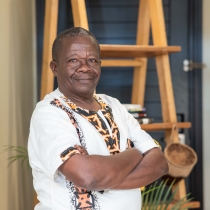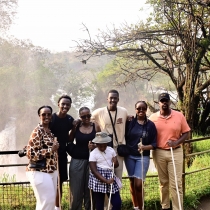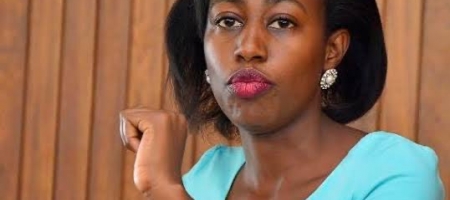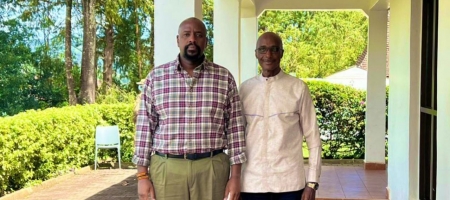
Red Beret: The Storm in a Military Cap
By Enoch Mwesigwa
If a stranger were to accidentally bump into you on a Kampala street and you turned to them and said, “Hey, Nigger, watch where you are going!”, they would most probably smile and say, “Sorry”, go on their way and you on yours. If you said the same thing to someone of color on an American street, the whole town might burn down that night in the ensuing riot. The word “nigger” is so offensive in America, it can no longer be spelled out in full even in literature or serious discourse; it is now called the “N” word.
What makes the use of the so-called N word so explosive in one place and benign in another? Historical experience. Stimuli cause negative feelings of fear and anger or joy and laughter depending on how one has experienced them before. In the American experience, the “N” word dredges up all the ugliest emotions rooted in centuries of dehumanization of the black people. The ordinary Ugandan, on the other hand, has hardly ever heard that word said referring to him or her, and it, therefore, has no emotional charge attached to it for the average Ugandan.
A similar scenario in Uganda is the idea of military wear, and clothing similar to it, which is in the news at present. The government recently gazetted certain articles of clothing to be the preserve of the Uganda People’s Defence Forces. Leaving the legality or otherwise of the gazetting aside, many Ugandans will probably sympathize with the idea of limiting the use of military wear by all and sundry, for the simple reason that because of our particular and peculiar history, Ugandans are afraid, or at best weary, of people dressed in a military manner. They (the Ugandans) have been “bitten” by the phenomenon of “men dressed in what appeared to be military uniforms” who have perpetrated countless crimes and atrocities, stories of which abound to this day.
But some ask; how come in other countries civilians can legally wear military-style clothing as long as that clothing has no official insignia attached to them, but Ugandans are being prevented from doing so? This is true for example in Kenya (when this writer last looked), and of course in the heaven-on-earth called the USA. The difference is, while the people of those countries may have their own home-grown problems, they have never experienced a situation where military attire per se serves to confer upon a person absolute license to abuse the rights of others over their very lives and their property. Alas, that is as characteristically Ugandan as matooke with ground-nut stew. Therefore, walking down a Kenyan or American street in what appears to be a full battle dress will not warrant a second look from the locals; danger has never come to them packaged that way.
As for insignia as a means of differentiating who from whom, how many non-military people can actually identify the official marks on the berets of any branches of the Uganda military? Precious few! And if one had to decide whether to stand or flee, would it not be the height of folly to wait until a group of men in dark jackets and military-style headgear (of whatever color), came close enough for one to appreciate the insignia? Prudence dictates that their headgear, not the court of arms or whatever other distinguishing marks on it, be considered. The people who make the insignia argument forget that to the Ugandan, these decisions are not made in a civilized courtroom with all the time to examine and compare artifacts at leisure, whereupon the differences would indeed literally jump out at the observer. Survival demands that a glimpse, from as far as possible, gives you the clue you need to make that crucial move.
The People Power movement is aggrieved by the curtailing of their use of the red beret as their symbol. This is understandable; they have invested in the creation of a brand. Also, one has to concede that the red beret can be worn in unthreatening ways. For example, a well-attired young lady in a fashion dress and a red beret certainly does not look like the proverbial threat. But, if the military cap were free to be worn by whoever wishes as long as it has no official insignia, then by the same reasoning, any piece of combat dress without insignia should be allowed. And if for example the camouflage jacket and trousers and the cap (all without insignia) are legal, why shouldn’t any individual, or indeed group of individuals, wear them all together as a full uniform? This would bring us back to square one: in Uganda, the military uniform will cause trepidation and anxiety long before it gets close enough for people to work out which distinguishing insignia it bears or does not bear.
Knowing where we have come from, can we Ugandans forget our current history; can we afford not to have any control of military wear at all? Or, shall we allow the military beret to be worn, but only with restrictions; for example, only with high heels, T-shirts, and lipstick? Shall we, maybe, allow each individual piece of military wear to be worn, but disallow the wearing of the full suit? How are we to balance freedom of expression in dress and the need of the people to feel safe?
You tell me.
Links
- 562 views









































Join the conversation